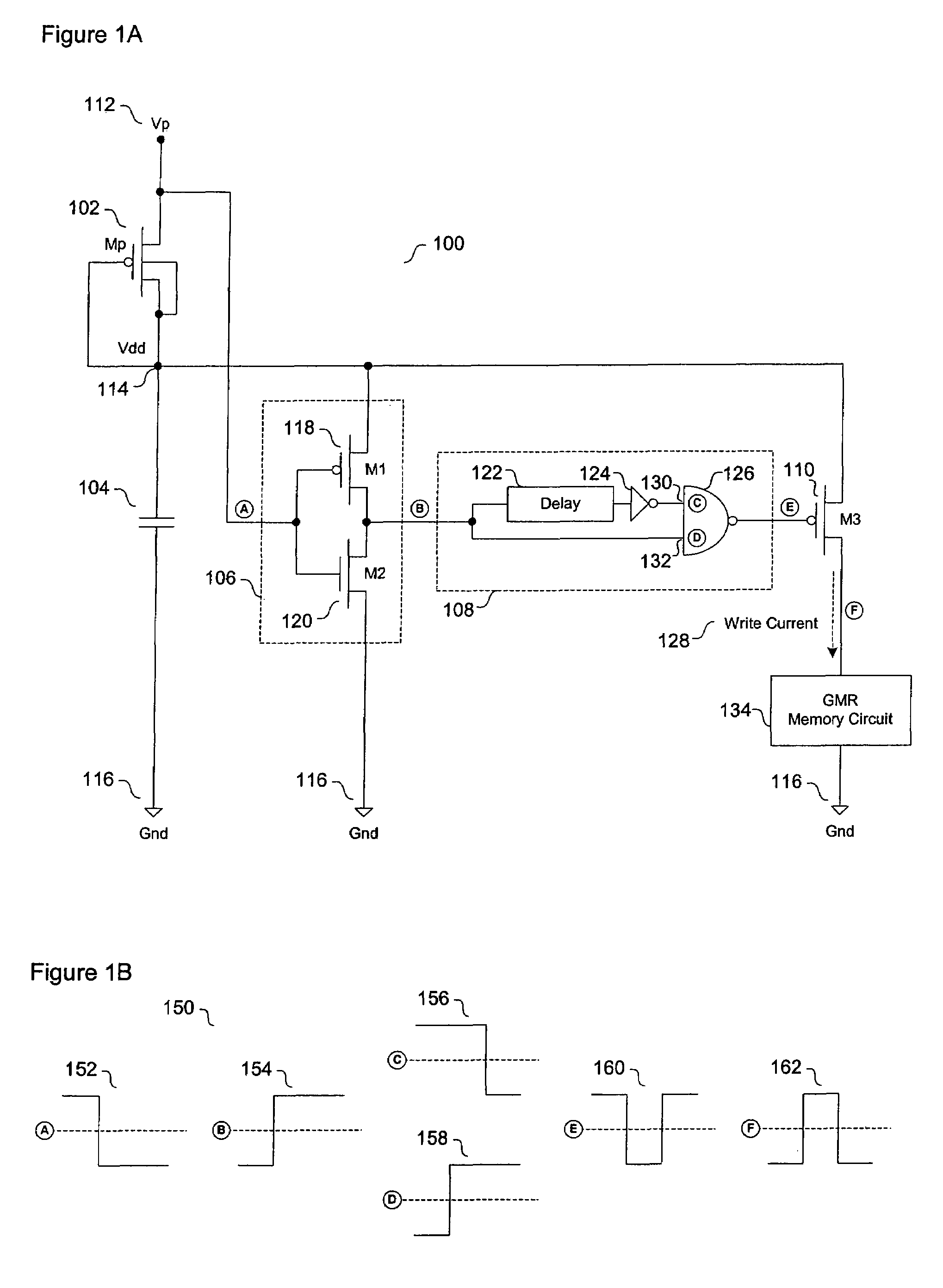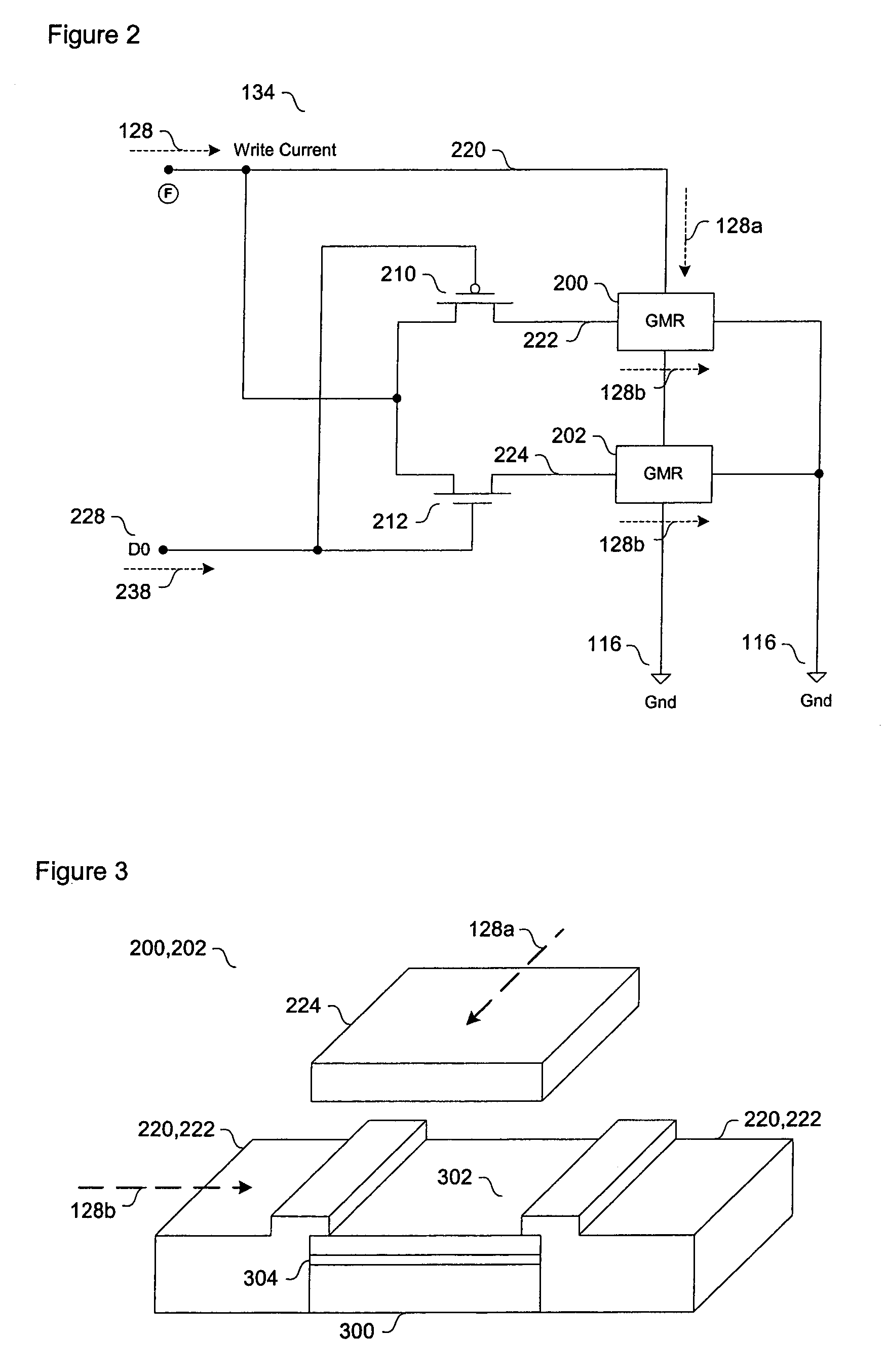State save-on-power-down using GMR non-volatile elements
- Summary
- Abstract
- Description
- Claims
- Application Information
AI Technical Summary
Benefits of technology
Problems solved by technology
Method used
Image
Examples
Embodiment Construction
[0023]Reference will now be made to the drawings wherein like numerals refer to like parts throughout. FIG. 1A illustrates one embodiment of a save-on-power-down circuit 100. The save-on-power-down circuit 100 comprises an isolation transistor (Mp) 102, a charge storage device (C) 104, an inverter circuit 106, a positive-edge-triggered pulse generating circuit 108, and a load transistor (M3) 110. The isolation transistor 102, in this implementation, may comprise a p-channel metal-oxide semiconductor field effect transistor (MOSFET), wherein the substrate terminal is connected to the source terminal. Additionally, the drain terminal of the isolation transistor 102 may be connected to a supply voltage (Vp) 112, and the gate terminal and the source terminal of the isolation transistor 102 are connected to the node 114, which may be preferably raised to the potential of an operating voltage (Vdd). In one aspect, the charge storage device 104 may be preferably a capacitor with a capacita...
PUM
 Login to View More
Login to View More Abstract
Description
Claims
Application Information
 Login to View More
Login to View More - R&D
- Intellectual Property
- Life Sciences
- Materials
- Tech Scout
- Unparalleled Data Quality
- Higher Quality Content
- 60% Fewer Hallucinations
Browse by: Latest US Patents, China's latest patents, Technical Efficacy Thesaurus, Application Domain, Technology Topic, Popular Technical Reports.
© 2025 PatSnap. All rights reserved.Legal|Privacy policy|Modern Slavery Act Transparency Statement|Sitemap|About US| Contact US: help@patsnap.com



